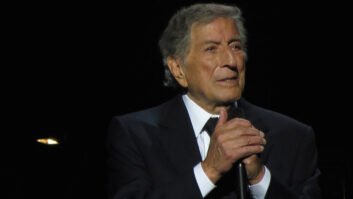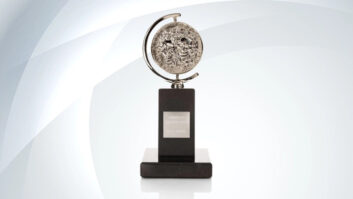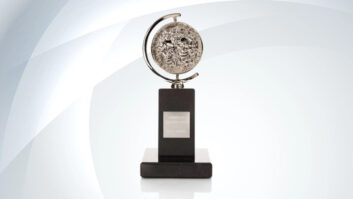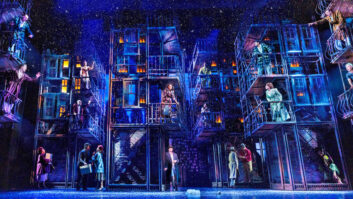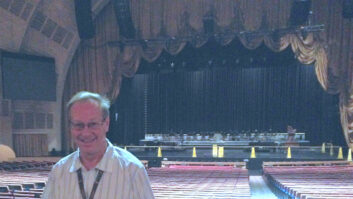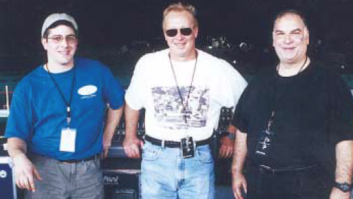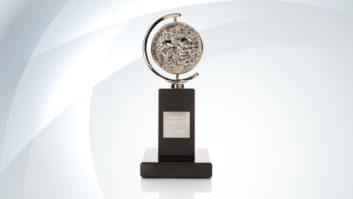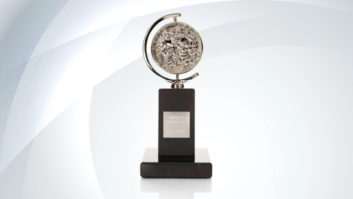Oh, delicious irony. The Producers, Broadway’s biggest hit in years, is the stage version of a 1968 cult film about a pair of sleazebags who have an unexpected Broadway hit. Played on film by Zero Mostel and Gene Wilder, the two scoundrels scheme to create a show so awful it must certainly fail, at which point the plotters intend to abscond with their investors’ money. But, despite the deliberately offensive title and a storyline that brings new meaning to the term “box office poison,” Springtime for Hitler is a smash.
In a bizarre, if deserved, example of history repeating itself, The Producers on Broadway was also an immediate smash: When the box office opened on April 19, first-day sales were over $3 million. Even with tickets priced at a Broadway record high of $100, the box office lines were so long that, in an unprecedented move, rival theaters across the street opened Producers ticket windows in their Phantom and Fosse box offices. And, crowning commercial success with critical acclaim, The Producers won all 12 Tony awards for which it was nominated, shattering the previous record of 10, set by Hello Dolly! in 1964. (There is no Tony for sound, an oversight that continues to baffle and irritate sound designers everywhere.)
Mel Brooks, who wrote and directed the original movie (and was awarded an Oscar for his screenplay), also wrote the book and lyrics for the musical. Two songs from the movie, “Springtime for Hitler” and “Prisoners of Love,” were held over, and Brooks wrote 15 new songs, of which “We Can Do It” and “Keep It Gay” stand out as instant classics. Frantic physical comedy, vaudeville moments, theatrical references, musical parody and literary homage abound, and the cast includes bona fide stars Nathan Lane as washed-up producer Max Bialystock and Matthew Broderick as nebbish accountant Leo Bloom.
The night before the Tony awards at Radio City Music Hall, I was fortunate to have a night off between Microsoft’s Office XP unveiling and Blu Cantrell’s New York premiere. I caught the show, met the audio crew and toured the 1,623-seat St. James Theater, which was beautifully renovated two years ago and formerly home to Oklahoma, The King and I and Hello Dolly!
Sound design for The Producers is by Steve Kennedy, whose designs include Aida, Titanic, How To Succeed in Business, Carousel and The Who’s Tommy. He is assisted by associate designer John Shivers, and equipment is provided by ProMix of Mt. Vernon, N.Y.
The show is mixed by David Gotwald, whom we last caught mixing Fosse two years ago, and whose credits include Crazy for You and Stephen Sondheim’s Passion, as well as runs with Phantom of the Opera and Chicago. The mix position at the St. James is in what Gotwald calls an “unfortunate” location, in the far corner of the orchestra level. Nevertheless, Gotwald calls The Producers “probably the best show I’ve ever mixed” and describes Mel Brooks as “the nicest guy I’ve ever met.”
Gotwald mixes the show’s 70-odd inputs on a Cadac J-Type Live Production Console equipped with moving faders. The console is split between a 46-slot main console for the actors’ radio mics and sound effects, and a 36-slot sidecar for the orchestra. Some economy is achieved by using stereo inputs for reverbs, keyboards and rack toms.
Outboard effects include Lexicon PCM 91 digital reverbs, which Gotwald uses for minimal vocal and orchestra treatments. Kick, snare drum and electric bass channels have Valvotronics Gain Ryder 3 compressors inserted, and Drawmer DS404 gates are used on the trap kit’s toms. Gotwald has also inserted XTA GQ-600 graphics and DP-200 parametrics on the principal vocals, chorus and orchestra subgroups. “The ensemble subgroups get a little more low end cut, because, generally, when they’re onstage there are more open microphones,” Gotwald explains. There’s also a subgroup for the Shure SM91s used as foot mics for two dance numbers: Lane’s “Little Old Lady Land” and Broderick’s “I Wanna Be a Producer.”
Sampler-based sound effects are triggered via MIDI, either from the console or, for one song, by conductor Patrick Brady via a remote start box. Redundant Akai S6000 samplers play back prerecorded sounds that include a telephone, toilet, gunshots, Mel Brook’s voice as a cat’s screech (just like in Young Frankenstein) and the lines “Don’t be stupid/Be a smarty/Come and join the Nazi Party” that Brooks also dubbed for the original film. Conductor Brady, plus the drummer, bass player and keyboardist get a click track in their Sennheiser headphones.
REDUNDANT A/B SPEAKER DESIGN
The A/B redundant theatrical reinforcement approach, pioneered by Martin Levan, reduces the comb filtering that can result when actors are close together and “leaking” into each other’s mics. In an A/B design, the principals’ mics are each routed to a different speaker system, so their voices interact acoustically in the air, rather than electronically in the console. For The Producers, the dozen lead mics are automatically switched to either the A or B system from one scene to the next.
An A/B pair of EAW KF300 speakers are used at each side of the proscenium opening, along with a tandem-drive 10-inch Sunfire subwoofer. (Meyer USW subwoofers were originally used for the pre-Broadway try-out at Chicago’s larger Cadillac Palace Theater, but could not be used in the St. James due to space limitations.) EAW JF80 speakers are used in A/B pairs for front-fill speakers. EAW’s new SC52 under-balcony cabinets are used to fill in the back of the orchestra and mezzanine levels. The center cluster consists of three more A/B pairs of KF-300’s aimed at the mezzanine, with a fourth pair focused down to cover the center of the orchestra level. JF80 speakers are used in A/B pairs for balcony coverage, and the stage monitors in the wings are JF 200s.
Thirty Crest 7001 amplifiers in a half-dozen racks are situated beneath the stage and behind the orchestra pit. Each speaker zone has an XTA DP-200 processor controlled by AudioCore software over an RS-485 network. The processors can also be accessed over a wireless LAN via a touch-screen laptop, dubbed a “black-ops pad,” furnished by ProMix’s John Weston. This allows the sound designer to adjust delay time or frequency response from any seat in the house without bothering the mixer.
Next to the amp racks, A2 Paul Delcilippo monitors 30 channels of Sennheiser 3532-U receivers via a computer running Mikroport software. Delcilippo monitors the 11 principal radio mics via a Leitech 32 XIP switcher, an E-V ELX-1A mixer and an Anchor AN-1000 monitor. Assisting with wireless is Joe Lenihan, who monitors the rest of the ensemble’s 18 mics on a redundant computer display. A third wireless signal monitor is at Gotwald’s mix position.
The Sennheiser SK-50 body packs are equipped with the new sweat-resistant MKE-2 Gold capsules. “We’ve discovered that the capillary action of the windscreen wicks moisture, so we’re using [the mics] without them,” Gotwald comments. “Up in the hairline, they get sweat but don’t get any popping.” In an early scene, Lane throws a glass of water in Broderick’s face and, even if his mic goes out, it eventually comes back. Because Lane and Broderick hardly ever come offstage, both of them are double-miked with both signals appearing on two dual-input channel strips; this way, Gotwald can switch between mics on-the-fly without changing EQ or faders.
One thing Gotwald has lots of experience with is hats. “Nathan is constantly putting his hat on and off, so I’m continually making EQ adjustments,” he explains. The ensemble is generally EQ’d for hats, because they wear them most of the evening. The running gag in the show is that Broderick can’t put on his hat until he’s a real Broadway producer. “He doesn’t wear a hat until the very end, which is great for me,” notes Gotwald.
A novel technique that sound designer Kennedy has used before has the five violinists each wearing a DPA 4065 omnidirectional headset mic. This provides a consistent mic-to-instrument distance and eliminates mic stand clutter in the cramped confines of the St. James orchestra pit. Each violin chair has a mic on/off footswitch that allows the musicians to mute themselves. Custom-manufactured by Weston from a simple guitar amp footswitch, the units include red and green LEDs to indicate status.
The five woodwinds, harp and cello are miked with AKG C-414s, while the trombones, trumpets and French horn are picked up with Sennheiser MD-609s. The trap kit in the middle of the pit is enclosed in Plexiglas, which also helps isolate the brass from the strings and woodwinds on opposite sides of the pit. Kit mikes include an RE-20 on kick, KM-84 overheads, a KM-100 on snare and SM98s on rack and floor toms. The pickup on the string bass goes through a Valvotronics Tube Amplified DI.
In what is becoming a common Broadway solution to the need for isolation and a cramped orchestra pit, the percussionist and harpist are located up on the seventh floor. The room, dubbed the “sky pit,” is divided with Plexiglas and treated with pleated velour. Percussion mics are an E-V RE-20 and four Neuman KM184s. Both musicians share a foldback mix on headphones.
Good orchestra seats for The Producers are sold out through spring 2002, but most seats are comfortably close to the stage, and the mezzanine holds nearly as many patrons as the floor with little balcony overhang. If you’re looking for tickets, “good luck, good luck, good luck!”
Mark Frink is Mix‘s sound reinforcement editor.
